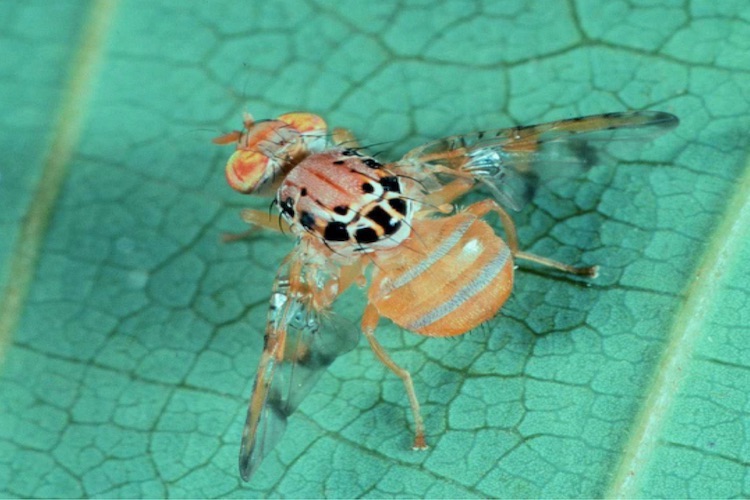
The challenge…
UNPREDICTABLE PRIMARY ACTORS - cohorts of independently operating individual insects which drive the on-farm processes and determine the effects of IPM.

Behaviour and fate of individual insects is stochastic. It is determined by insect's intrinsic state (age, maturity, developmental stage etc). It is influenced by a number of proximate extrinsic factors, such as: nearby topography, phenology and status of host & non-host host plants, availability of critical resources, activity of natural enemies and predators, timing and combination of farm management and IPM treatments. In addition, it is modulated by the prevailing climate and local weather fluctuations.
MOSAIC LANDSCAPES - estimating and quantifying the net effects of pest activity is a particular challenge. Especially in the case of incipient or very low density populations, where there are no empirical methods for studying such processes. In such cases, even subtle system modifications can have a profound but difficult to quantify effect on the final outcome of the insect-driven process.
Our approach…
INDIVIDUAL-FOCUSED 'ETHOLOGICAL' APPROACH - It is based on modelling the behaviour of individual insects and the assumption that the local outcome of the insect driven process, such as IPM performance, is determined by the topography and traits of the local site (farm). For these reasons, the agent-based process emulation and the 'virtual farm' concept were used.
It consists of 3 main stages:
1. 'Virtual insect' - complex of algorithms and software emulating lifetime behaviour of an individual insect, based on a set of quantified rules and patterns characterising behaviour of the target insect species.
2. 'Virtual farm' - a digital representation of the key spatiotemporal features of the local site (customer's farm), the main on-farm processes and/or IPM treatments.
3. Process emulation - a cohort of 'virtual insects' (from a few up to thousands of individuals) is 'released' into the 'virtual farm' where, alike on a real farm, each individual 'virtual' insect acts, develops or dies according to its age and the daily fluctuating local risks and conditions.
The final result is neither 'calculated' nor 'programmed' - alike in a real on-farm experiment, during each simulation run the process is emulated de novo, and the unique end-results are generated by stochastic actions undertaken by the individual 'virtual insects' operating on the 'virtual farm'.
The use of stochastic simulation of individual behaviours of the key ‘actors’ (insects) and 'virtual enacting' of insect-driven processes offers new insights into their mechanisms, which otherwise are empirically unattainable. Furthermore, this approach allows to estimate the net effects of multiple, concurrent and subtle modifications introduced in the local farming system.
Our tools…
PESTonFARM - is a complex model for stochastic emulation, which reflects the essential climatic and spatiotemporal traits of the farm or location under study ('virtual farm') and mimics the behaviour and development of large insect cohorts, independently operating according to stochastic Markov-like process, responding to daily fluctuations in farm parameters, configurations of applied IPM treatments and prevailing weather conditions.
◆ 'virtual farm' - spatiotemporal traits of the local site (farm) and the main on-farm processes are converted into their digital representation.
◆ 'virtual insect' - A cohort of 'virtual insects' (from a few up to many thousands of individuals) is 'released' into the 'virtual farm' and, alike on a real farm, each individual 'virtual' insect acts, develops or dies according to its age and the daily fluctuating local conditions.
QuantEtho - is a software for quantitative ethological analysis and stochastic simulation of insect behaviour.
Both tools, PESTonFARM & QuantEtho, are proprietary - were developed by S. A. Lux 'from the Concept to the Code'. Both are fully integrated with MS Excel for convenient data input and results presentation. The tools can be flexibly adapted or modified to meet the specific research or application needs.
Our approach and tools were scientifically validated, internationally presented, peer-reviewed and published.



